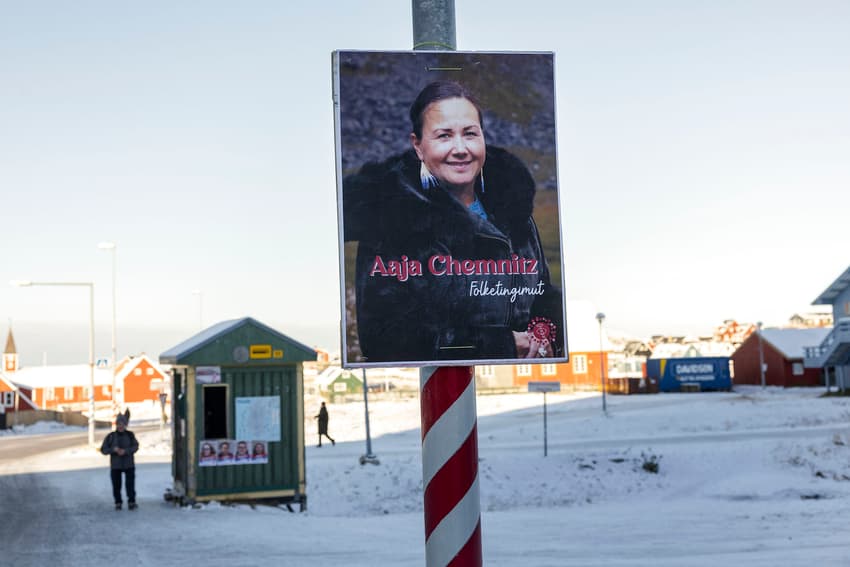How two Greenland seats ensured last-minute Danish red bloc majority

The counting of votes in Denmark's parliamentary election went up to the wire last night, with the "red" bloc reaching 88 mandates out of 90, until the final count of two Greenland mandates secured them a majority.
The Social Democratic party Siumut and the left-wing party Inuit Ataqatigiit (IA), received most votes in Greenland, giving the red bloc a majority in Danish parliament at the eleventh hour.
Mette Frederiksen’s five-party red bloc had looked set to lose its majority as vote counting wore on throughout Tuesday evening. But as the last votes were tallied, the bloc finally reached the 87 seats it needed in mainland Denmark.
It was the North Atlantic mandates that ultimately pushed the red bloc over the edge — one of the Faroe Islands’ two seats and both of Greenland’s.
The Greenlandic election website showed early on Wednesday morning that all votes had been counted. Aaja Chemnitz from IA received 21.7 percent of the vote. Aki-Mathilda Høegh-Dam from Siumut got 33.7 percent.
This is almost twice as many votes as in the 2019 parliamentary election, according to the Greenlandic Broadcasting Corporation KNR.
The parties IA and Siumut are the largest when it comes to Greenlandic representation in Danish Parliament. Both parties have secured the two parliamentary mandates in Greenland for the last six elections.
There has only been one time, in 1979, that Siumut has not secured one of the two mandates. IA first entered Danish Parliament in 2001 and has been there ever since.
The third largest party in this year's election was the Democrats, who got 18.5 percent of the vote. Naleraq got 12.2 percent, Atassut 3.6 percent, while 0.9 percent of the Greenlandic votes went to others.
A total of 19,734 Greenlanders cast their vote on Tuesday, out of a total of 41,305 who were eligible to vote. This is a turnout of 47.8 percent.
READ MORE:
- Why was turnout down in 2022 Danish election?
- AS IT HAPPENED: Denmark’s red bloc wins tight election victory
Comments
See Also
The Social Democratic party Siumut and the left-wing party Inuit Ataqatigiit (IA), received most votes in Greenland, giving the red bloc a majority in Danish parliament at the eleventh hour.
Mette Frederiksen’s five-party red bloc had looked set to lose its majority as vote counting wore on throughout Tuesday evening. But as the last votes were tallied, the bloc finally reached the 87 seats it needed in mainland Denmark.
It was the North Atlantic mandates that ultimately pushed the red bloc over the edge — one of the Faroe Islands’ two seats and both of Greenland’s.
The Greenlandic election website showed early on Wednesday morning that all votes had been counted. Aaja Chemnitz from IA received 21.7 percent of the vote. Aki-Mathilda Høegh-Dam from Siumut got 33.7 percent.
This is almost twice as many votes as in the 2019 parliamentary election, according to the Greenlandic Broadcasting Corporation KNR.
The parties IA and Siumut are the largest when it comes to Greenlandic representation in Danish Parliament. Both parties have secured the two parliamentary mandates in Greenland for the last six elections.
There has only been one time, in 1979, that Siumut has not secured one of the two mandates. IA first entered Danish Parliament in 2001 and has been there ever since.
The third largest party in this year's election was the Democrats, who got 18.5 percent of the vote. Naleraq got 12.2 percent, Atassut 3.6 percent, while 0.9 percent of the Greenlandic votes went to others.
A total of 19,734 Greenlanders cast their vote on Tuesday, out of a total of 41,305 who were eligible to vote. This is a turnout of 47.8 percent.
READ MORE:
- Why was turnout down in 2022 Danish election?
- AS IT HAPPENED: Denmark’s red bloc wins tight election victory
Join the conversation in our comments section below. Share your own views and experience and if you have a question or suggestion for our journalists then email us at [email protected].
Please keep comments civil, constructive and on topic – and make sure to read our terms of use before getting involved.
Please log in here to leave a comment.